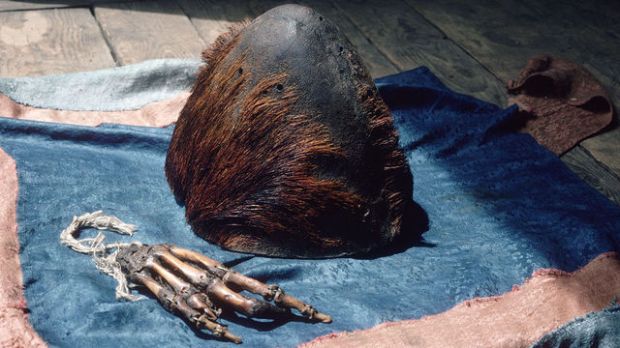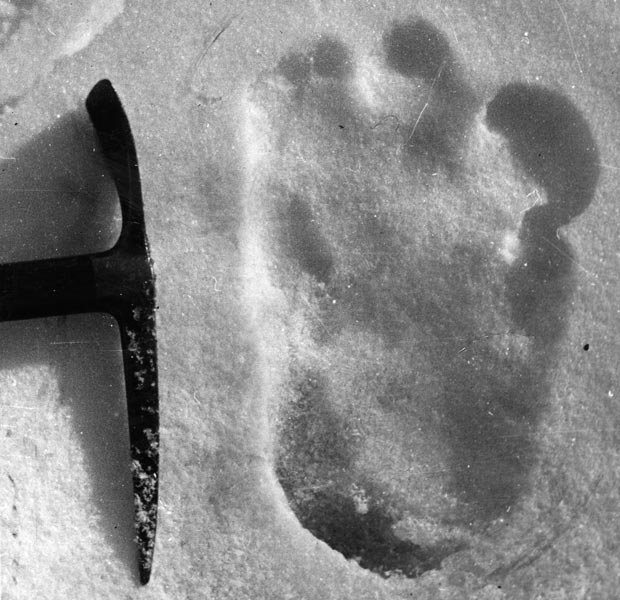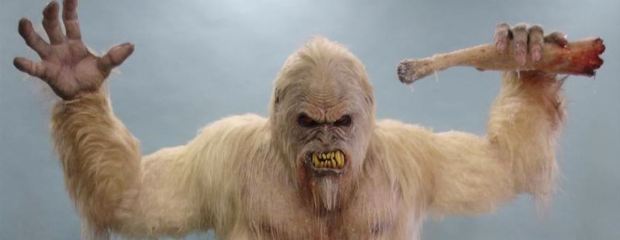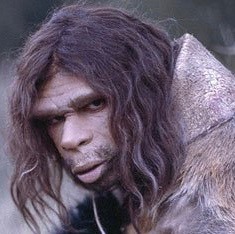The Yeti lives high up in the remote parts of the Himalayas….allegedly.

Here’s our guide to spotting Yeti…guaranteed*
* Let’s make it very clear from the beginning that we’re being partly “tongue in cheek” about this Yeti thing…so, if you really want to guarantee a “Yeti sighting”…..pop along to your local Skoda dealer, or just keep an eye out whilst your driving….the Yeti is out there if you look!

Not so rare…a Skoda Yeti!
Then again is the mythical Yeti of the Himalayas just that….or is there more to it? You can’t have no smoke without fire….can you?
Here’s how the story generally goes….High in the remote, mountain wilderness of the Himalayas lives a large, ape-like creature that walks upright, is larger than a human being and remains unknown to modern science.
Tales and alleged sightings of this creature exist as far apart as Ladakh and Bhutan and of course in Nepal too. There are photographs of mysterious, large footprints in the snow, stories from local villagers who have been attacked, or even abducted by this fearsome beast and even alleged specimens of bone, hair and even a skull of this creature.

A supposed hand and skull of a Yeti
It goes by many local names, but to most of us it is the Yeti!
The Yeti is right up there with the Loch Ness Monster and UFO’s.
Respected explorers and mountaineers even report sightings and encounters of ‘something’.
Could such a large creature actually exist? After all we still know relatively little about the Snow Leopard. We know now that Tigers have been found at 4000m in the Himalayas, a few years ago that would have been considered most unlikely.
To prove the existence of the Yeti would be a major commercial coup, particularly if you’re Himalayan trekking operator. Global superstardom overnight.
If we were to proclaim “we’ve seen a Yeti”, there’d be some who would be all too ready to believe and many who’d say we were delusional, or pulling off a publicity stunt.
But we think it is very unlikely that the Yeti is real in the true sense. We are often asked the question, “Is it a just a myth or does it have some substance in reality”, maybe it’s both.
Let’s look at what is “out there” in Yeti land…

Is this a Yeti footprint in the snow?
What about the footprints in the snow? Those aren’t just stories, there are photographs. The thing with snow is it changes. Make a footprint yourself in the snow and then revisit it a few days later. Does it now look your footprint? The snow hasn’t remained constant. It’s melted a little, refrozen, melted a little again and so on. It makes identification rather difficult and thus the photo’s are most probably ‘inconclusive’.
Then there are the ‘sightings’. They vary a bit, but many seem to have a particular thread in common, a large and hairy creature walking upright. Well, that’s precisely what we do all of the time and perhaps this upright walking is where the ‘wild man of the mountains’ speculation originates. Now some apes walk upright too. Not all of the time, but sometimes.
So is the Yeti a large Ape?
People who say they have been attacked by the Yeti often talk about claws too. That doesn’t sound too much like an Ape. There are of course Langur Monkeys living in the Himalayas and you’d certainly not want to get in a fight with one. They don’t have claws as such, but their strong finger nails come fairly close and would give you right old serious scratch. But Langurs are not exactly large, so what else could be the explanation.

The “Hollywood movie” version of the Yeti
It’s very big, hairy, walks upright, has claws and seems to sometimes behave aggressively if encountered, or disappears quickly. Oh, we should best add into the mix that it is pretty rare too and seems to live higher up in the mountains. Also, for some reason when the Yeti became the Abominable Snowman in movies and the like its hair (fur) became white too. Darker hair (fur) is actually more consistent with Yeti ‘encounters’.
The most likely ‘suspect’ is the Tibetan Bear – Ursus arctos pruinosus – a sub-species of the Brown Bear and it seems that this may well be the most plausible explanation for the modern day Yeti. Where legend and zoology meet.
This bear is very rare. Seriously rare. We’ve seen a couple of Snow Leopards ourselves, but never this bear. So if you’re a local and encounter such an animal that you weren’t aware existed, or have certainly never seen, how do you explain it? Perhaps you relate to the creature you were told of in childhood stories. The Tibetan Bear is very big, almost Grizzly Bear size and if threatened or surprised it will stand upright.

The beautiful Tibetan Bear-The real Yeti?
But hang on a minute. What about those Yeti samples? DNA analysis of quite a few “claimed to be from a Yeti’” samples have shown that they were from this bear species, or the Black Bear. The famous “Yeti Skull” turned out to be from a species of Himalayan Antelope and the “Yeti Hand” turned out to be human.
But we used the term ‘modern day Yeti’ in a previous paragraph.
What we call the Yeti goes way, way back in time. Stories of the Yeti remain entrenched in Himalayan folklore, passed down from generation to generation.
On a recent TV Documentary British scientist, Mark Evans ventured a rather interesting theory, that perhaps the Yeti did once exist and that the stories of the Yeti passed down from generation to generation over time do have some basis in reality. But, not a Yeti as we would like to imagine it, or hope it to be, but just as fascinating.
It goes a bit like this….
Like “Chinese Whispers” unwritten stories that are passed down through many, many generations will become a little changed over time. But, these stories tell of a “wild mountain man-like creature”. One that would attack villages and even make off with people.
Now we know that “we” – Homo Sapiens – are both a distinct species of hominid as well as the only one in existence today. But, that wasn’t always the case. There were others too. The one we all likely know of best are the Neanderthals. We know that modern humans and Neanderthals co-existed and most likely not without conflict either.

Could the real Yeti have looked a bit like this?
Just a few years ago the existence of a now extinct species of hominin was discovered. The Denisovan. Although there is still a long way to go, it’s thought that Denisovans ranged from Siberia to South East Asia. So, the Himalayas are slap bang in the middle of that range and it’s highly likely that this species lived there before we got there. Not only that, a gene known as EPAS1 has seemingly been found in the genome of Denisovans. This particular gene means that a body can live with low oxygen levels at high altitude. Just like that of the Himalayas.
So, what if this primitive species was already living in the Himalayas and some point along come modern humans encroaching onto “your patch”? Well, you’d probably be a bit miffed. Thus conflict ensues. To the modern human, this is a “wild man from the mountains”, quite possibly seems a bit more primitive, hairy and very aggressive too. Maybe sometimes these “wild men” come down from the mountains and attack in the form of a raid and snatch people too? From this the stories emerge. Just like Neanderthals the “wild man” died out for one reason or another, but the story of the “wild man” lived on.
Could this be the origin of the Yeti?
Still…what if you do find yourself trekking in Nepal you might be THE ONE that proves the existence of Yeti.
Fame and fortune!
Reality sandwich time…you probably won’t see a Yeti, but you’ll certainly see the biggest and highest mountains in the world.

Trekking in Nepal IS spectacular
Even without a couple of Yeti photo’s to post on FaceTube, the rest of your photos should be pretty spectacular.

Snow Cat Travel is the choice of renowned travel guide publishers


Haha, loved this 🙂
LikeLike
Interesting article, though for me it could have profited from more scrutiny of the folkloric aspects of the Yeti in Tibeto-Nepalese culture which I find a more convincing locus of origin than that proposed by the Denisovan theory. Whether scientifically verifiable or not (and all the evidence suggests that it’s not) the Yeti – and by association the Nepalese Ban Jhankri (who has never been subjected to global scrutiny and is therefore far less well known) are a very real presence in the consciousness of thousands of Himalayan dwelling people and their lineage can very reasonably be traced back to the original Tibetan rock ogress Sin Mo and her entourage of fearsome mountain deities. Pre-Buddhist Tibet was a wild and dangerous country inhabited by fearsome animistic mountain and nature goddesses. Foremost among these terrifying deities was the rock ogress Sin Mo who, Bön legend recounts, coupled with a monkey and gave birth to seven offspring, the progenitors of Tibet’s original seven tribes. In 1981 Lama Dorje of Tshap village in the Gyasumdo valley of Manang district recounted the same legend of Sin Mo and the monkey to the anthropologist Stan Mumford, but with a telling Buddhist gloss. According to the learned monk the monkey was none other than a reincarnation of Chenresigs (Avalokisvara), the patron saint of Tibet. Mumford: “All Tibetans can thus define themselves as having the same ancestor-ancestress, and a temperament that is compassionate from the monkey Boddhisattva father and quick to anger from the rock demoness mother.’ Larry G Peters writes of a later Buddhist version of the same myth which tells of an epic battle between Sin Mo and Srong San Gampo, the first Buddhist hero king of Tibet in which the king kills the ogress. Peters goes on, ‘The Mani Kabum also contains the Buddhist account of the second Sin Mo whose body corresponds to the landscape of central Tibet and who was nailed down by erecting temples and monasteries on her various body parts. Her heart lies below the royal capital of Lhasa.’ Here we have a metaphorical representation of the vanquishing by Buddhism of the dark and chaotic forces of the Bön po pantheon and belief system. The terma (revealed text) of Lady Yeshe Tsogyel, the yab-yum consort of Guru Rinpoche, tells of a precise moment of schism: a great debate held at Samye in the 8th century which ‘led to a conversion of those who were to become reformed Bön and to the forcible exile of others into adjacent regions such as Mongolia and Nepal’ (Mumford).
Yetis are said to live high up in the mountains, well above the tree line. They are especially revered amongst the Sherpas of Solu Khumbu who think of them as both potentially very dangerous but also blessed with a magical wisdom and the capacity for acts of love and kindness. They refer to them by the Tibetan name, Nyalmo. But Nyalmo is also a word used throughout Nepal for the wife of the Ban Jhankri, the small forest dwelling creature who is said to rarely measure above four foot. Male/female, tall/short, mountain dwelling/forest dwelling, certain recurring preoccupations of the Himalayan folkmind can be seen to coalesce around the this protean wilderness figure. The Ban Jhankri and the Nyalmo, who is also sometimes known as the Ban Jhankrini, at first sight make an odd married couple. While he is small, non-aggressive unless provoked and possessed of magical powers which he likes to teach – in the form of mantras – to specially selected children who have no blemishes on their soul or body, she is a slathering, cannibalistic beast measuring up to nine foot tall. It is said that the Nyalmo has large sagging breasts that hang down well below her wrists which she slings over the nape of her neck when at rest or holds in both hands when running downhill; because of this it seems to be a relatively well established piece of folklore advice to run downhill if you are ever chased in the forest by a Nyalmo because her flailing breasts will significantly impede her descent. While the Ban Jhankri teaches his abducted charges the essentials of Jhankri lore, usually for a period of up to thirty days, the Nyalmo will, on a daily basis, intimidate the young initiates by threatening to cut their heads off and eat first their brains and then the rest of their bodies (Yetis too are said to be partial to a meal of human brain). It appears that this is more a test of resolve on the part of the initiates rather than a real possibility for although physically weaker than his wife, the Ban Jhankri has the magical wherewithal to keep all her murderous tendencies in check. There are two significant points to be made about the Ban Jhankri – Nyalmo relationship. Firstly it can be seen as a union of opposites, a symbol of cosmic duality. The Ban Jhankri is the male emanation of the old white magic of Bön: he represents goodness, light, order, health, life and protection. The Nyalmo is the female emanation of the old black (sacrificial) magic of Bön: she represents evil, darkness, chaos, pestilence, death and violence. But crucially they must work together and, in their role of shaman king and sorcerer queen they are representative of the way that, since the time of the nine sisters, all jhankris and all bokshis (witches) must work together – a metaphysical proposition which calls to mind a line from Shakespeare: ‘The thread of this life is of a tangled yarn, good and ill together.’ The second significant point is that the figure of the Jhankri – the traditional healer, psychopomp and spirit medium of Nepal who has often learnt his craft from and is in contact with the Ban Jhankri during trance journeys – has been sanctioned and to some extent subsumed into the prevailing religious orthodoxies. Jhankris are accorded respect in both Hindu and Buddhist communities – in the former especially in the slightly altered role of the Dhami who is a spirit medium rather than a spirit communicator or soul journeyer. There is certainly a parallel to be drawn between the Nyalmo and the Hindu goddess Kali – the destructive mother goddess wife of Shiva, bloodthirsty goddess of the hunt and emanation of the dark but necessary aspect of Nature. Many annual Jhankri gatherings take place at Kali temples. Similarly, many of the fearsome mountain demonesses of Bön, Sin Mo and her entourage – the forebears of the Nyalmo – appear in modern, albeit internalised, forms in Tibetan Buddhism. Larry G Peters: ‘In his 28th song Milarepa describes his encounter with five cannibalistic demonesses. Like the Nyalmo, they are there to test Milarepa’s reslove but unlike in the Shamanic tradition he identifies them as unreal:
“I do not fear your demons
Fictions conjured by mind.
Manifest yet non-existent”
For Milarepa, the Buddhist saint, everything is ‘maya’, cosmic illusion. But for Jhankris, who very often report having suffered or continual suffering from mental instability and schitzoid episodes, the dividing line between ordinary reality and non-ordinary reality is not as clear cut as many people, particular those inheritors of a Western rationalist tradition, believe it to be. No scientific physical evidence of Yetis, much less Ban Jhankris, has ever been convincingly presented, yet for villagers who run off naked into the forest alone as children for days on end, eating worms off the back of their hands, hearing the voice of the Ban Jhankri’s whispered mantras and trembling from fear of the Nyalmo’s torturous threats, the shaman king and his queen are very real, whether entities in a waking dream or not. (According to Eliade, once seen as the world authority on classical shamanism, a shamanistic worldview does not vouchsafe predominance of consensus reality over other experienced realities; in other words it does not preclude the coexistence of different planes of reality). If a teacher-pupil relationship with a Ban Jhankri is successfully cultivated, it can become a source of great good for the community.
One final quote from Ekvall who is discussing the meaning of the Tibetan word ‘göd’ which can be roughly translated as ‘wildness of character’: ‘The term probably says most aptly what the culture hero should be. The Tibetan nomads prefer to be known as untamed. Such an ideal personality and ethos is different from the Buddhist version of the monkey man culture heroes who brought agriculture and then became fully human. Originally the Yeti were untamed and wild creatures of the forest and mountains and, before agriculture was dominant, were fierce deities who needed propitiation as life and nourishment (i.e. the hunt) depended on them. Thus to be abducted by them is to return to origins, to the sacred source of power and wisdom of the untamed, unhewn forested mountains. And to be initiated by this wild wisdom is to be initiated by the half animal divine spirits of the forests and mountains. However, not everyone who is spontaneously called to the mysterious forest is up to such a dangerous encounter.’
LikeLike